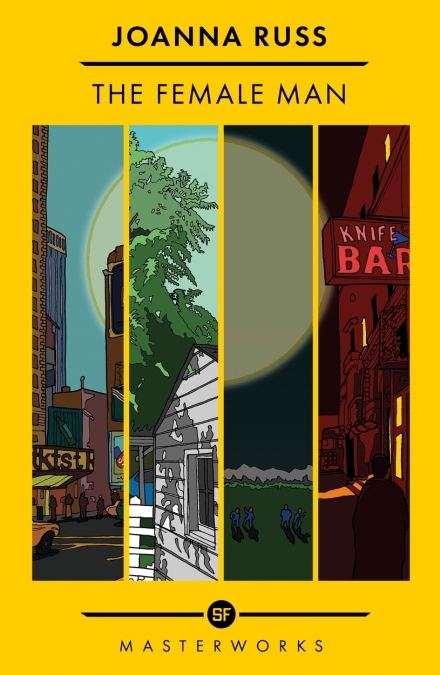
Jael’s violent world of women-versus-men war is utterly lacking in harmony. Jeannine’s world of wanting a man to marry and “validate” her is meek and wimpy. Janet’s world of women is described as over-planned and cold. Yet, each of the four characters maneuvers in her world using different strategies and making different choices although the novel indicates that no strategy or choice is perfect. The Female Man is a complex novel, and Jael’s declaration about the “four versions of the same woman” is a complex statement that asserts that all women are united in sharing essentially the same physical body. “I can hardly believe that I am looking at three other myselves.”

Seemingly so different, and yet Jael asserts that she and the other three are “four versions of the same woman.” She says:
“There’s Janet, hardier than the two of you put together, with her sun-bleached hair and her muscles she’s spent her life outdoors, a Swedish hiker and a farmhand….And I, who could throw you across the room, though I don’t look it.” “Here is Jeannine, the youngest of us all with her smooth face: tall, thin, sedentary, round-shouldered, a long-limbed body made of clay and putty…Īnd there’s Joanna, somewhat older, much more active, with a different gait, different mannerisms, quick and jerky, not depressed, sits with her spine like a ruler…

What you see is essentially the same genotype, modified by age, by circumstances, by education, by diet, by learning, by God knows what. Looking at herself and the three women with her, Jael says: That question of whether the Joanna of the story is the Joanna who wrote the book is further complicated - or explained - by an insight that comes three-quarters of the way through The Female Man when Jael makes her first appearance.



 0 kommentar(er)
0 kommentar(er)
